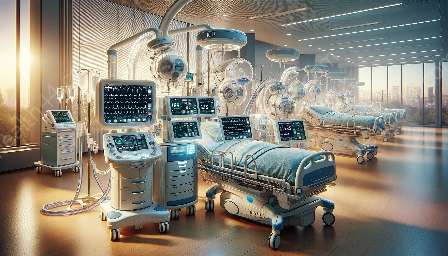Ventilators are crucial medical devices that play a vital role in life support systems and are essential components of medical devices and equipment. Understanding the functions, types, and advancements in ventilator technology is key to comprehending their significant impact on patient care and the healthcare industry.
The Role of Ventilators in Life Support Systems
Ventilators, also known as mechanical ventilators or respirators, are life support machines that support breathing in patients who are unable to do so on their own. They deliver air with increased levels of oxygen into the lungs and remove carbon dioxide, thereby helping patients maintain adequate respiratory function.
Ventilators are essential in critical care settings, such as intensive care units (ICUs) and emergency rooms, where patients with respiratory failure, lung disease, or other conditions require respiratory support to survive. They are also utilized during surgeries and post-operative care to ensure proper oxygenation and ventilation.
Types of Ventilators
There are several types of ventilators designed to address different clinical needs and patient populations. Understanding the distinctions between these ventilator types is paramount in providing optimal respiratory support.
Invasive Ventilators
Invasive ventilators require the insertion of an artificial airway, such as an endotracheal tube or tracheostomy tube, into the patient's airway to deliver the ventilator support. This method is commonly used in critically ill patients who are unable to breathe independently.
Non-Invasive Ventilators
Non-invasive ventilators, such as CPAP (Continuous Positive Airway Pressure) and BiPAP (Bilevel Positive Airway Pressure), provide respiratory support without the need for an artificial airway. These devices are often used to treat conditions such as sleep apnea, chronic obstructive pulmonary disease (COPD), or acute respiratory failure in a less invasive manner.
Advancements in Ventilator Technology
Medical engineering and technological innovations have led to significant advancements in ventilator technology, resulting in improved patient outcomes, enhanced user experience, and greater flexibility in respiratory support.
Smart Ventilators
Modern ventilators are equipped with advanced sensors, connectivity features, and intelligent algorithms that enable personalized ventilation strategies based on a patient's specific respiratory patterns and needs. Smart ventilators can adapt to changing conditions and optimize airway management, contributing to more precise and efficient therapy.
Portable Ventilators
Portable ventilators offer greater mobility and flexibility, allowing patients to receive respiratory support outside of traditional hospital settings. These devices are particularly beneficial for patients with chronic respiratory conditions who require ongoing ventilation while maintaining an active lifestyle.
Impact of Ventilators on Patient Care and Health Care Systems
Ventilators have transformed the landscape of critical care and respiratory medicine, providing life-saving interventions for patients with compromised lung function. Their role in life support systems and medical devices & equipment underscores the indispensable nature of ventilator technology in modern healthcare.
In conclusion, ventilators are instrumental in upholding life support systems and represent a cornerstone of medical devices and equipment. Recognizing the dynamic evolution of ventilator technology and its profound implications for patient care is essential in fostering a comprehensive understanding of this critical aspect of healthcare.


